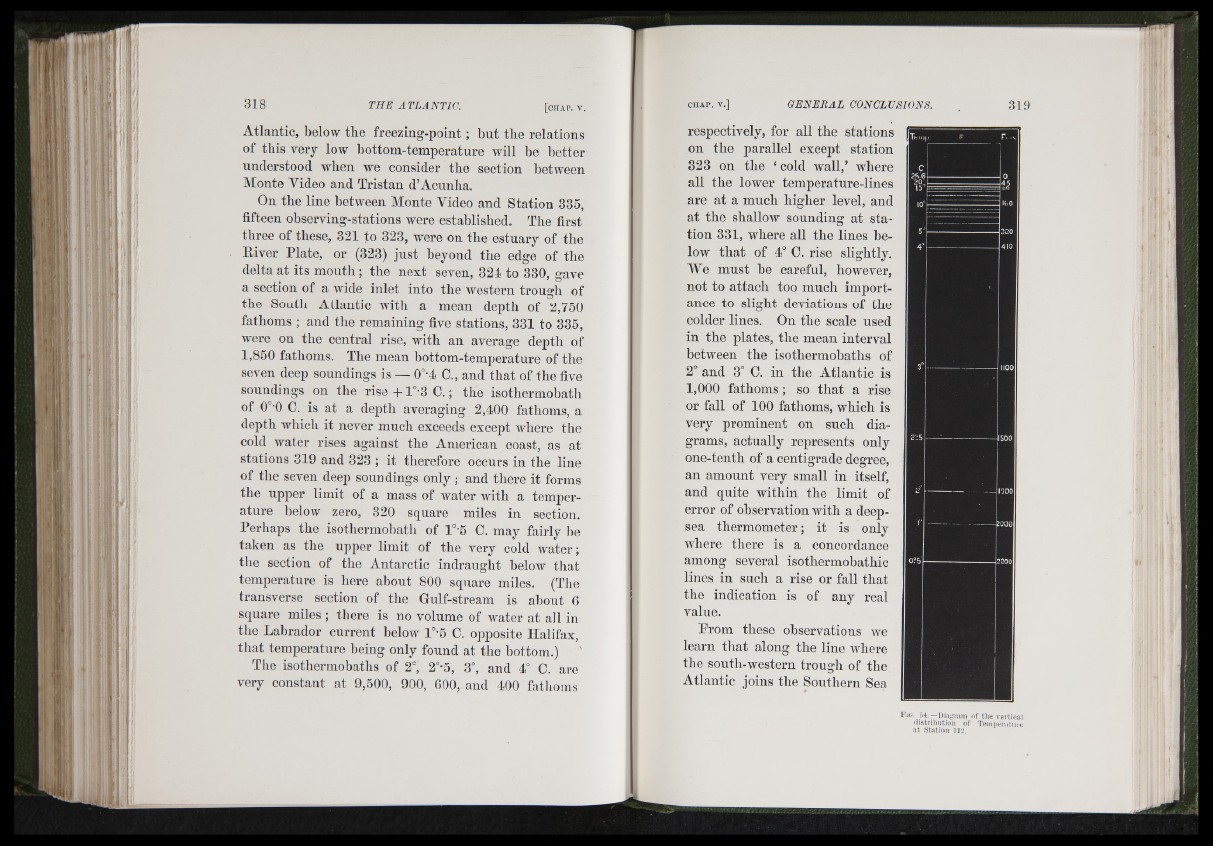
Atlantic, below the freezing-point ; but the relations
of this very low bottom-temperatnre will be better
understood when we consider the section between
Monte Video and Tristan d’Acnnha.
On the line between Monte Video and Station 335,
fifteen ohserving-stations were established. The first
three of these, 321 to 323, were on the estuary of the
River Plate, or (323) just beyond the edge of the
delta at its month ; the next seven, 321 to 330, gave
a section of a wide inlet into the Avestern trough of
the Soutli Atlantic Avith a mean depth of 2,750
fathoms ; and the remaining five stations, 331 to 335,
were on the central rise, with an average depth of
1,850 fathoms. The mean hottom-temperature of the
seven deep soundings is — 0°-l C., and that of the five
soundings on the rise 1-1°-3 C. ; the isothermohath
of 0°-0 C. is at a depth averaging 2,100 fathoms, a
depth which it never much exceeds except where the
cold water rises against the American coast, as at
stations 319 and 323 ; it therefore occurs in the line
of the seven deep soundings only ; and there it forms
the upper limit of a mass of water with a temperatnre
helow zero, 320 square miles in section.
Perhaps the isothermohath of l°-5 C. may fairly be
taken as the upper limit of tbe very cold water;
tbe section of tbe Antarctic indrauglit below that
temperature is here abont 800 square miles. (The
transverse section of the Gulf-stream is about 6
square miles ; there is no volume of water at all in
the Labrador current below l°-5 0. opposite Halifax,
that temperature being only found at the bottom.)
The isothermobatbs of 2°, 2°-5, 3°, and 4° C. are
very constant at 9,500, 900, 600, and 400 fatlioms
respectively, for all the stations
on the parallel except station
323 on tbe ‘ cold wall,’ where
all tbe lower temperatnre-lines
are at a mnch higher level, and
at the shallow sounding at station
331, where all the lines helow
that of 4° C. rise slightly.
We must be careful, however,
not to attach too much importance
to slight deviations of the
colder lines. On the scale used
in the plates, the mean interval
between the isothermohaths of
2° and 3° C. in the Atlantic is
1,000 fathoms; so that a rise
or fall of 100 fathoms, which is
very prominent on such diagrams,
actually represents only
one-tenth of a centigrade degree,
an amount very small in itself,
and quite within the limit of
error of observation with a deep-
sea thermometer; it is only
where there is a concordance
among several isothermobathic
lines in such a rise or fall that
the indication is of any real
value.
Prom these observations avc
learn that along the line Avhere
tbe soutb-western trough of the
Atlantic joins the Southern Sea
Fic o4. —Diagram of the vertical
distribution nf Teiiiperaiui e
at Station 1 1 2 .